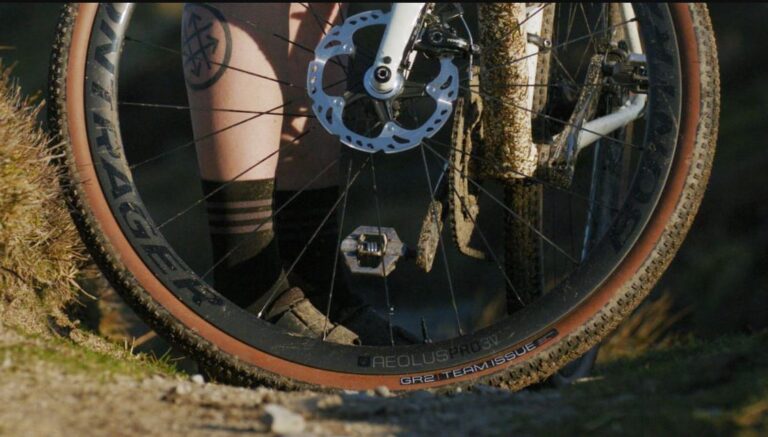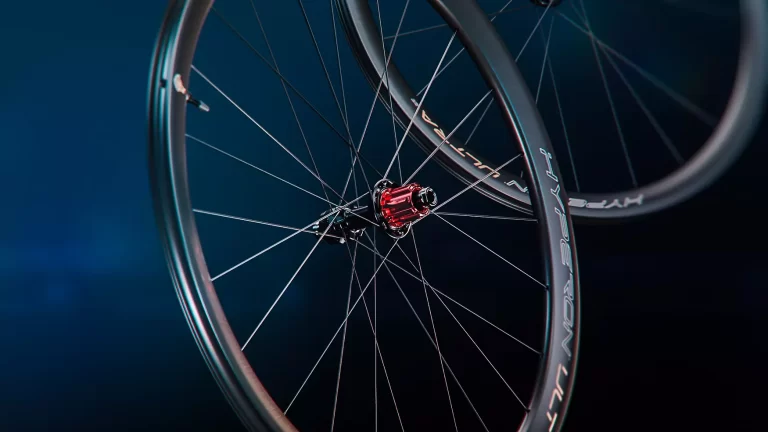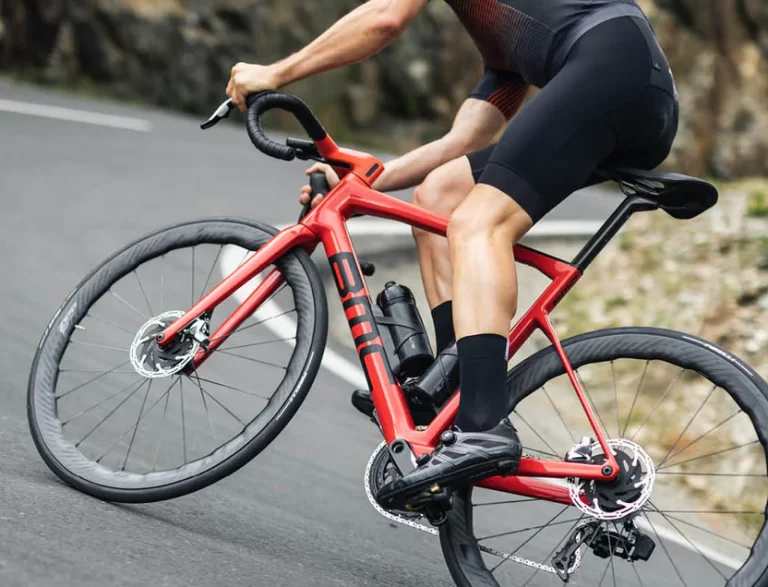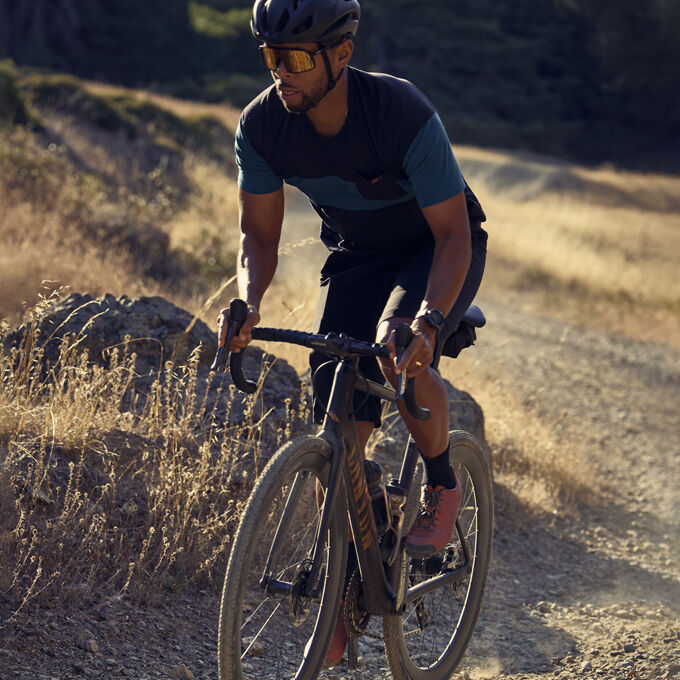Road Bike Wheel Buyers Guide
Introduction
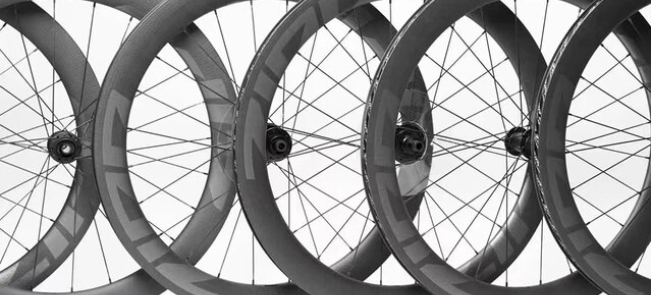
When it comes to enhancing your road biking experience, many enthusiasts talk about frame materials, groupsets, or saddles. Yet, arguably, the most transformative upgrade you can make is selecting the right wheels. That’s why I wrote this Road Bike Wheel Buyers Guide. Just as the shoes you wear can alter your walking or running experience, the wheels you choose can significantly impact your ride.
Each wheel on the market promises a plethora of advantages — from aerodynamic prowess to unbeatable durability. But the crux lies in understanding how these factors sync with your individual needs as a cyclist. Are you an adrenaline junkie craving speed on time trials? Perhaps an audacious climber aiming to conquer steep terrains? Or maybe, you’re a weekend warrior seeking the perfect balance between comfort and performance on those long, meditative rides?
Furthermore, the choice of wheels isn’t just about improving speed or reducing effort. It’s about fine-tuning your bike to resonate with your cycling goals, ensuring that every pedal stroke translates effectively on the tarmac, and making certain that your long rides remain fatigue-free, while your races are as efficient as possible.
In this guide, we’ll dive deep into the world of road bike wheels, demystifying the jargon and laying out the facts. By the end, you’ll be equipped with the knowledge to make an informed decision, ensuring your wheels are in perfect harmony with both your bike and your ambitions.
Factors to Consider When Buying
- Purpose/Type of Riding
Before diving into wheel specifics, introspect on the kind of rider you are. Your choice of wheel should reflect your predominant riding style.- Recreational: For those who ride for pleasure, prioritize comfort and durability. Consider wider rims and tires to absorb road imperfections.
- Racing: Seek lightweight and aerodynamic wheels that offer quick acceleration and maximum power transfer.
- Long-distance/Touring: Durability is essential. Look for robust wheels that can handle the added weight of luggage and prolonged usage.
- Discipline-Specific Considerations Your choice of road cycling discipline can significantly influence the wheel you’ll need.
- Endurance Riding:
- Comfort and Vibration Damping: Wider rims and tires can offer a smoother, fatigue-free ride. Some carbon wheels also provide added vibration damping.
- Durability: Opt for wheels built for resilience, capable of handling both long distances and varied road conditions.
- Versatility: Look for wheels that can handle mixed terrains, especially if your endurance rides sometimes venture off the beaten tarmac.
- Criterium Racing:
- Acceleration: Crits involve many quick bursts of speed. Lightweight wheels respond faster, offering that needed edge.
- Handling and Stability: Tight corners are a crit staple. Stiffer wheels ensure better control in such scenarios.
- Braking Performance: With rapid decelerations, effective braking becomes vital. Consider the brake compatibility and the braking surface material.
- Time Trials/Triathlon:
- Aerodynamics: Aerodynamic efficiency is paramount. Deep-section rims, often 50mm or more, reduce drag, enhancing speed.
- Stiffness for Power Transfer: Consistently high speeds mean you’ll want wheels that transfer power efficiently without energy loss.
- Straight-line Stability: Time trials aren’t about nimble turns but maintaining a straight line at high speeds. Ensure your wheels offer stability, especially in crosswinds.
- Climbing:
- Weight: Every gram counts when fighting gravity. Seek ultra-lightweight wheels.
- Stiffness: You want a wheel that efficiently converts your effort into forward motion, especially on steeper gradients.
- Braking Performance: What goes up must come down. Excellent braking performance is crucial for the descents that follow tough climbs.
- Endurance Riding:
- Weight and Stiffness
Balance is key. While you might be tempted by ultra-lightweight wheels, remember that sturdiness shouldn’t be sacrificed. A stiffer wheel might feel less compliant on rough roads, but it can offer better power transfer and responsiveness, particularly during sprints or aggressive cornering. - Aerodynamics
The rim’s depth, shape, and even the spoke count and design can influence how air flows over a wheel, affecting speed and stability. While deeper rims are more aerodynamic, they can be challenging in crosswinds and might weigh more. - Material
- Aluminum: Typically more affordable and durable, making them suitable for everyday use. They might weigh more and lack the vibration-damping qualities of carbon.
- Carbon: Offers weight savings, better aerodynamics, and enhanced vibration damping. However, they come at a premium and might be less resilient in crashes.
- Braking Performance
The choice between rim and disc brakes will influence the wheels you can buy. Ensure the wheelset is compatible with your bike’s braking system. Consider the conditions you often ride in; for instance, disc brakes perform better in wet conditions. - Budget and Price Range
While it’s tempting to buy the latest, high-end wheelsets, it’s essential to gauge what you’re getting for the price. More expensive doesn’t always mean better for your specific needs. Define a budget, understand what features matter most to you, and find a wheel that offers the best value within that range.
Hub Considerations

The hub is the heart of a wheel, and its design and components play a crucial role in the wheel’s performance.
- Bearings: Two common types are found in hubs:
- Sealed Cartridge Bearings: These are self-contained units that are replaceable and easy to maintain. They tend to keep out dirt and moisture effectively, leading to longer life.
- Cup and Cone Bearings: More traditional and adjustable, these require regular maintenance and are found on some high-end and many budget wheelsets.
- Engagement Mechanism: This refers to how the wheel engages (or catches) when you pedal. A hub with quick engagement means less lag when you start pedaling, which can be especially beneficial in situations requiring frequent stop-starts or bursts of speed.
- Flange Design: The flange is the part of the hub where the spokes attach. Its design affects the angle and tension of the spokes, influencing wheel strength and responsiveness.
Spoke Configuration
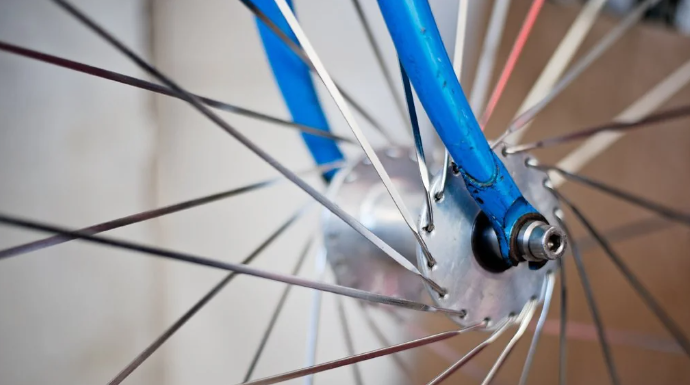
Spokes contribute significantly to a wheel’s strength, weight, and aerodynamics.
- Number of Spokes: A higher spoke count often translates to a stronger, albeit slightly heavier, wheel. Conversely, a wheel with fewer spokes might be lighter and more aerodynamic but less durable.
- Spoke Patterns:
- Radial Lacing: Spokes run straight from the hub to the rim. This configuration can be lighter but is typically used only on the front wheel.
- Cross-Laced Patterns: Spokes cross each other, which can add strength, making them suitable for rear wheels or for riders who need more robust wheels.
- Spoke Materials: While stainless steel is standard and offers strength and durability, bladed spokes (which are flattened) can improve aerodynamics. Carbon spokes are lighter but come at a premium.
Wheelset Extras and Maintenance
Caring for your wheels can significantly extend their lifespan.
- Axle Types:
- Quick Release: A mechanism that allows for easy wheel removal without tools. Suitable for many road bikes.
- Thru-Axles: Provides a sturdier wheel-to-frame connection, improving stiffness and handling. Increasingly standard on newer bikes.
- Maintenance: Regularly inspect hubs, spokes, and rims for signs of wear or damage. Clean and, if necessary, grease bearings periodically. True your wheels if they wobble or are misaligned.
- Tubeless Setups: If going tubeless, ensure the rim is sealed correctly with rim tape to maintain an airtight environment.
Recommendations & Top Picks
There’s no one-size-fits-all when it comes to wheelsets.
- Local Bike Shops: Engage with professionals who can provide tailored advice based on your specific needs, riding style, and budget.
- Research: Look into reputable brands and the latest innovations. While brand legacy matters, newer brands might offer innovative designs at competitive prices.
Click here to see our ratings of the Best Road Bike Wheels
List of Major Road Bike Wheel Manufacturers
Conclusion
Selecting a wheelset isn’t just about numbers and specs; it’s about feel. The ultimate test is how a wheel performs on the road under you. Take test rides, compare, and then invest. Remember, in cycling, every component has its place, and a wheelset is a critical piece of the puzzle that can significantly enhance or hinder your experience.
Have fun!! John
FAQ’s
How do I know what bike wheel to buy?
Choosing the right bike wheel involves several considerations based on your riding style, type of bike, terrain, and personal preferences. Here’s a guide to help you make an informed decision:
- Type of Bike and Riding Style:
- Road Bikes: Generally use 700c diameter wheels. Opt for lightweight and aerodynamic wheels if racing or doing long-distance rides.
- Mountain Bikes: Depending on your sub-discipline (e.g., downhill, cross country, enduro), you might choose between 26-inch, 27.5-inch (650b), or 29-inch wheels.
- Hybrid/Commuter Bikes: Often use 700c wheels, but durability and puncture resistance might be more important than weight.
- Touring Bikes: Durability and ability to carry heavy loads are critical. 700c or 26-inch wheels are common, depending on the region (26-inch wheels are more common in less-developed areas).
- Material:
- Aluminum (Alloy): More affordable, durable, and offers good performance. Suitable for a wide range of riders.
- Carbon: Lightweight and can be more aerodynamic, but generally more expensive. Best suited for performance-oriented riders.
- Rim Width:
- Ensure the rim width is suitable for your tire size. A wider rim pairs well with a wider tire, providing better stability and traction, especially for mountain bikes and gravel bikes.
- Rim Depth (for road bikes):
- Shallow Rims (less than 30mm): Lighter and more stable in crosswinds, good for climbing.
- Mid-depth Rims (30mm-50mm): A balance of aerodynamics and weight, suitable for general road cycling.
- Deep Rims (more than 50mm): Very aerodynamic, best for flat terrains and time trials but can be tricky in crosswinds.
- Tubeless, Tubed, or Tubular:
- Tubeless: Allows you to ride with lower tire pressure, providing better traction and a smoother ride with fewer punctures.
- Tubed: Traditional system, where the tire houses an inner tube.
- Tubular: The tire is glued to the rim. Mostly used by professional racers due to its performance benefits but is harder to repair on the go.
- Brake Compatibility:
- Rim Brakes: Ensure the rim has a braking surface.
- Disc Brakes: Make sure the hub is compatible with disc brakes (either thru-axle or quick release).
- Wheel Hubs:
- Quality hubs can significantly improve wheel performance. Look for hubs with high-quality bearings and, if you’re a mountain biker, consider the type and number of engagement points in the hub’s freehub body.
- Spoke Count and Lacing:
- More spokes typically mean a stronger, more durable wheel but can add weight. Consider your weight and the loads you’ll carry.
- Spoke lacing patterns can influence wheel strength and stiffness.
- Budget: Decide on a budget beforehand. While more expensive wheels often offer performance benefits, there are many mid-range options that provide excellent value for the money.
- Reviews and Recommendations: Check product reviews, ask local riders, or consult with bike shops. Personal experiences can give insights beyond technical specifications.
Lastly, remember that wheels play a significant role in the feel and performance of a bike. Investing in a good set of wheels can notably enhance your riding experience.
How do I choose a road wheelset?
Choosing a road wheelset can significantly impact your riding experience, speed, comfort, and bike handling. Here’s a guide to help you navigate the considerations:
- Purpose and Riding Style:
- General Road Cycling: A versatile wheelset with a balance of weight and aerodynamics.
- Climbing: Lightweight wheelsets with shallow rims.
- Time Trials or Triathlons: Deep-section aerodynamic rims.
- Endurance Riding: Comfort-oriented wheels that can accommodate wider tires.
- Material:
- Aluminum (Alloy): Typically more affordable, durable, and heavier than carbon. Good braking performance, especially in wet conditions.
- Carbon: Lightweight and can be shaped for aerodynamic advantages. Generally more expensive. Ensure compatibility if you’re using rim brakes.
- Rim Depth:
- Shallow Rims (less than 30mm): Stable in crosswinds, good for climbing.
- Mid-depth Rims (30mm-50mm): A balance of aerodynamics and weight, suitable for varied terrain.
- Deep Rims (more than 50mm): Offer aerodynamic benefits, ideal for flat terrains, but can be less stable in crosswinds.
- Rim Width:
- Modern road wheels are getting wider, which supports wider tires for improved comfort, grip, and sometimes even reduced rolling resistance. Look for internal widths of at least 17mm.
- Tubeless, Tubed, or Tubular:
- Tubeless: Can run at lower pressures for improved comfort and reduced puncture risk. Requires tubeless-ready tires and usually sealant.
- Tubed: Traditional system, straightforward to set up and repair.
- Tubular: Tires are glued to the rim. Preferred by some racers due to perceived ride quality benefits but can be cumbersome to repair.
- Brake Compatibility:
- Rim Brakes: Requires a braking track on the rim. Ensure compatibility, especially if considering carbon rims.
- Disc Brakes: Ensure the wheel hub is compatible with your disc brake setup (rotor attachment type and axle configuration).
- Hubs and Bearings:
- High-quality hubs can enhance the ride quality. Consider factors like bearing quality (sealed cartridge vs. cup and cone) and ease of maintenance.
- Spoke Count and Lacing:
- More spokes can mean a stronger and slightly heavier wheel. Spoke lacing patterns (e.g., radial, 2-cross, 3-cross) can influence wheel strength, stiffness, and aerodynamics.
- Weight:
- A lighter wheelset can make climbing easier and acceleration quicker. However, durability shouldn’t be sacrificed too much for the sake of saving grams.
- Budget:
- Set a budget and aim for the best quality within that range. Sometimes spending a bit more can yield significant performance or durability benefits.
- Brand Reputation and Warranty:
- Consider brands with good reputations and those that offer robust warranties or crash replacement programs.
- Reviews and Recommendations:
- Read professional and user reviews, consult local riders, or get advice from bike shops. Real-world experiences often provide insights beyond technical specifications.
Finally, when you’ve chosen your wheelset, ensure it’s installed correctly, and always follow manufacturer guidelines regarding weight limits, tire widths, and brake settings.
Is a 29 inch wheel the same as 700c?
Yes and no. While both 29-inch wheels and 700c wheels have a similar bead seat diameter (the place on the wheel where the tire bead sits) of approximately 622mm, they are traditionally used for different types of bikes and have different typical widths. Here’s a breakdown:
- 700c Wheels:
- Usage: Traditionally used for road bikes, though now they’re also found on many hybrid and gravel bikes.
- Width: Generally, they are designed for narrower tires (though gravel and some hybrid bikes can accommodate much wider tires on a 700c rim).
- Naming: “700c” comes from an old French tire sizing system.
- 29-inch Wheels:
- Usage: Used for mountain bikes.
- Width: Designed for wider tires, typical of mountain bikes. They offer more cushioning, grip, and shock absorption on rough terrains.
- Naming: “29-inch” refers to the approximate diameter of the tire when mounted and inflated on the rim. This measurement is somewhat of a generalization, as actual tire diameters can vary based on tire model and tread pattern.
So, while you could technically mount a narrow road tire on a 29-inch mountain bike rim or a wide mountain bike tire on a 700c road rim (assuming the rim width is appropriate), the traditional uses and associated widths of these wheels differ. Always ensure that the tire width is appropriate for the rim width and the intended use.
